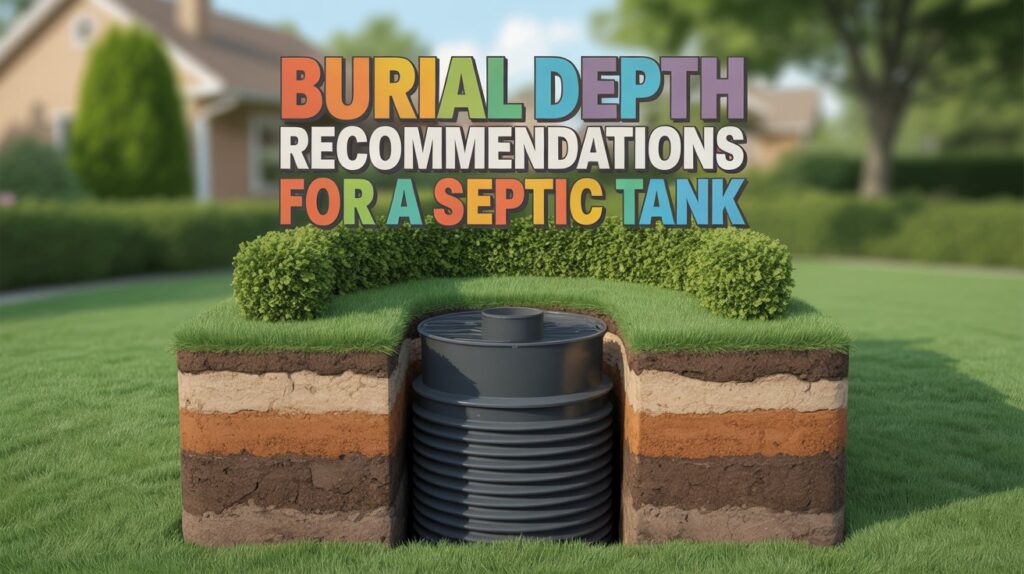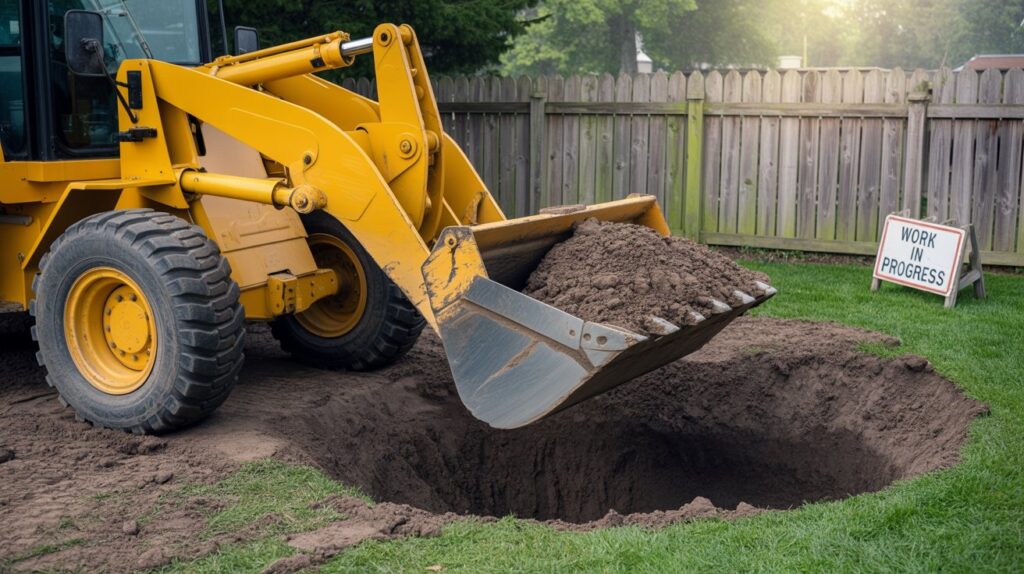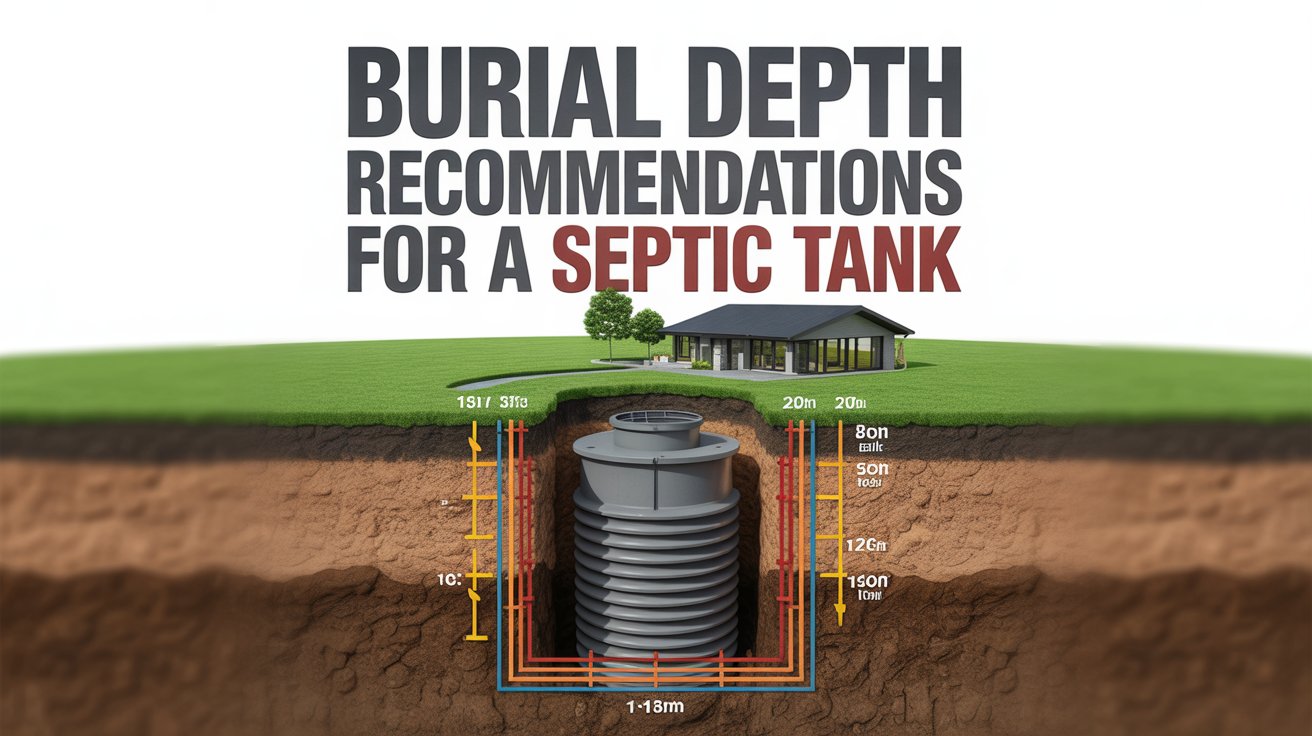Have you ever asked yourself, “How deep should I bury my septic tank?” It’s a common question for homeowners installing or maintaining their septic systems. The depth at which a septic tank is buried plays a crucial role in its functionality, longevity, and safety. Let’s explore the various aspects of determining the optimal burial depth for a septic tank.

Understanding the Basics of Septic Systems
Before diving into specifics about burial depths, it’s important to grasp the basic concept of how septic systems operate. A septic tank is a crucial component of these systems, serving as a holding tank for solids and wastewater that come from your household plumbing.
Purpose of Septic Tanks
Septic tanks function not just as storage spaces but also as treatment facilities where the natural separation of liquids and solids occurs. Wastewater from your home flows into the tank, heavier solids settle at the bottom while fats and oils float to the top. Bacteria within the tank help break down these solids, making the system efficient and reducing the frequency of required pumping.
Common Materials Used
Septic tanks are typically made from concrete, fiberglass, or plastic. Each material type has its advantages and disadvantages, particularly concerning installation and burial depth. Concrete tanks tend to be heavier and more durable, while fiberglass and plastic options are lighter but can be more susceptible to surface pressure.
Factors Influencing Burial Depth
The depth at which a septic tank should be buried depends on various factors. Understanding these elements will assist you in making informed decisions during installation or repair.
Soil Type and Condition
The type of soil present in your area is a significant variable. Sandy soils, for instance, may require different considerations compared to clay or rocky soils. Heavier soils like clay provide more support and protection against surface weight but may complicate drainage and aeration significantly.
Local Regulations and Permits
Local building codes and regulations are pivotal in deciding the depth at which a septic tank may be buried. These guidelines ensure safety, environmental protection, and system effectiveness. Consulting local authorities or a professional septic installer can provide clarity on any legal constraints or specific requirements applicable in your area.
Groundwater Table
The proximity of the groundwater table to the surface influences how deep you can safely bury your septic tank. Tanks need to be elevated above the water table to prevent contamination and ensure proper drainage.
Optimal Burial Depth for Septic Tanks
Given the factors mentioned, what is the recommended depth for burying a septic tank? Generally, a tank is buried 1 to 2 feet from the surface. However, this can vary based on the factors we’ve discussed.
Recommended Burial Depth
| Tank Material | Approximate Burial Depth |
|---|---|
| Concrete | 1 to 4 feet |
| Fiberglass | 1 to 2 feet |
| Plastic | 1 to 2 feet |
Concrete tanks can be buried slightly deeper due to their weight and durability, as they are less susceptible to damage from pressure.
Installation Tips for Optimal Depth
- Assess the Soil: Conduct a soil test to determine its type and drainage capability.
- Consult Local Codes: Always verify with local permit offices to ensure all installation guidelines are met.
- Measure the Water Table: Ensure the bottom of the tank is above the water table during wet seasons.
- Use Professional Installers: Engage experienced professionals familiar with your region’s conditions.
Consequences of Improper Burial Depth
Burying a septic tank at the wrong depth can lead to various issues, both environmentally and functionally.
Structural Damage
If buried too deep, the weight of the soil can exert excessive pressure, potentially cracking or collapsing the tank. Conversely, a tank buried too shallow might get damaged by above-ground activities like driving heavy vehicles over it erroneously.
Environmental Concerns
Improper burial depth can also lead to environmental hazards, such as groundwater contamination. Ensuring adequate burial can prevent effluent from leaking into the surrounding environment.
Maintenance Challenges
Septic tanks that are buried too deep may complicate accessing them for maintenance, inspection, and pumping. This could increase the costs and time required for routine maintenance.

Common Issues and Troubleshooting
Despite careful installation, issues can still arise with septic tanks. Knowing how to identify and troubleshoot common problems is key.
Signs of a Problem
- Slow Draining Plumbing: If your toilets or drains are slow to clear, it could indicate septic backup or poor drainage.
- Unpleasant Odors: Bad smells around the tank area might indicate leaks or overflow.
- Lush Grass Over the Tank: An area with greener grass might suggest there’s a leak or overflow that’s fertilizing the ground.
Possible Solutions
- Regular Pumping: Schedule regular pumping—usually every 3-5 years, depending on tank size and household water usage.
- Reduce Water Usage: Minimize water use to prevent overwhelming the system.
- Avoid Harsh Chemicals: Refrain from disposing of harsh chemicals down the drain, as they can damage the bacterial environment in your tank.
Conclusion
In ensuring your septic tank remains functional and compliant, paying close attention to its burial depth is fundamental. By understanding the various factors and adhering to established guidelines, you enhance the system’s efficiency and longevity. Whether you’re considering a new installation or assessing an existing system, careful consideration of these points will guide you in making informed decisions.

